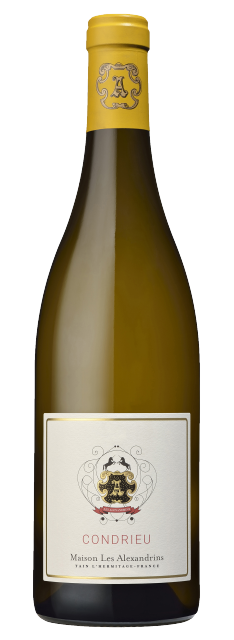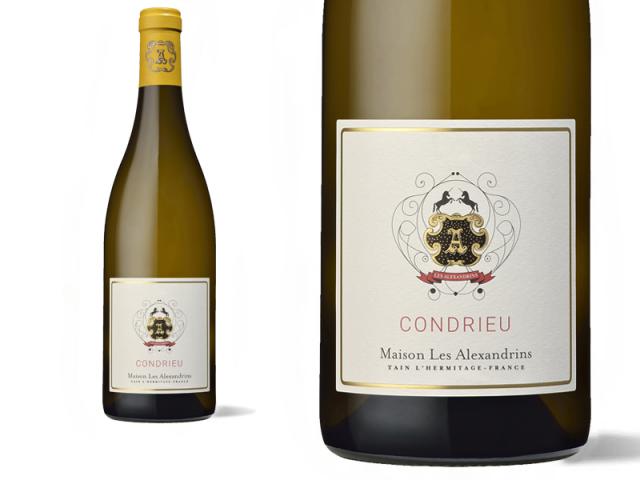Presentation
Description
The wines from Condrieu have had an excellent reputation for many generations. The Popes in Avignon worshipped it, in the XVIth century the “Chapitre Lyonnais” offered it to his esteemed guests. More recently, Curnosky described it as one of the greatest white wines in France. Unfortunately, Phyloxera the first world war, the great depression in the thirties along with the industrialisation of the region were responsible for many to abandon their vineyard.
When the appellation of Condrieu was created in 1940, only three communes; Condrieu, Saint Michel and Vérin were included in the production area and totalled 170 hectares. In 1967, this was extended to four neighbouring villages; Chavanay, Saint Pierre de Boeuf, Malleval and Limony bringing it to 387 hectares. With increasing demand from the winegrowers and in view of keeping high quality wines, the area of plantation was reviewed one last time excluding any vines above an altitude of 300 meters. An agreement with the INAO brought the appellation down to 262 hectares. A quarter of the surface was withdrawn in order to only keep the hillside vines with the best exposure, where Viognier reaches its best maturity.
When the appellation of Condrieu was created in 1940, only three communes; Condrieu, Saint Michel and Vérin were included in the production area and totalled 170 hectares. In 1967, this was extended to four neighbouring villages; Chavanay, Saint Pierre de Boeuf, Malleval and Limony bringing it to 387 hectares. With increasing demand from the winegrowers and in view of keeping high quality wines, the area of plantation was reviewed one last time excluding any vines above an altitude of 300 meters. An agreement with the INAO brought the appellation down to 262 hectares. A quarter of the surface was withdrawn in order to only keep the hillside vines with the best exposure, where Viognier reaches its best maturity.
Terroir
The main stone found in Condrieu is granite. On the surface the soil is covered with decomposed granite and loess. This is soil is perfectly suited to Viognier and the vines benefit from excellent sunshine. When looking for winemaker collaborators, we wished to limit our research to Côteau de Cherry and Côteau de Rozay that have a bit of altitude and where the wines have a good balance and more importantly great freshness.
The vintage
After the solar and Mediterranean 2015 vintage, 2016 is very structured and fresh. The wines are flattering right from the first months but their balance will carry them for many years.
Location
In our search of winegrowers, we wanted to work in very specific places like coteaux de cherry and coteau de rozay, which are vineyards quite high in altitude, in order to get a nice balance and keep freshness for our wines.
Process
Vinification partly in tanks and partly in barrels of 225 litres. Maturing on fine lees for 8 months.
Varietal
Viognier : 100%
Advice
Tasting
Pretty yellow color with green undertones. Very fruity and fresh nose on exotic fruit, pineapple, acacia flowers, lychee's, peach. Very elegant and discreet ageing notes of sweet spice. This 2016 Condrieu presents beautiful balance between richness and mineral tension which brings a lot of length to this wine. The finish is saline with beautiful bitterness.
Tasting video
Serving
Drink in its youth as an aperitif with some prawns.
11-12°C.
11-12°C.
Reviews
"Pale yellow. Aromas of ripe peach, pear and tangerine are complemented by zesty mineral and candied ginger nuances. In a weighty yet lively style, showing very good clarity and solid thrust to the juicy orchard and pit fruit flavors. Finishes very long and sappy, displaying excellent clarity and a sexy floral quality."
"Rich, offering a wide array of creamed pear, yellow apple, peach and apricot flavors stitched with citrus oil and anise notes. Stays energetic and detailed, with ripples of jasmine, honeysuckle, bitter orange and almond throughout, showing a flash of minerality buried on the finish. Drink now through 2024. "
"Still floral and vibrant, the 2016 Condrieu Maison les Alexandrins is medium to full-bodied, with a softly dusty, tactile feel on the palate that’s akin to crushed stone or gentle tannins. Apricot and melon notes turn more citrusy on the lingering finish."


